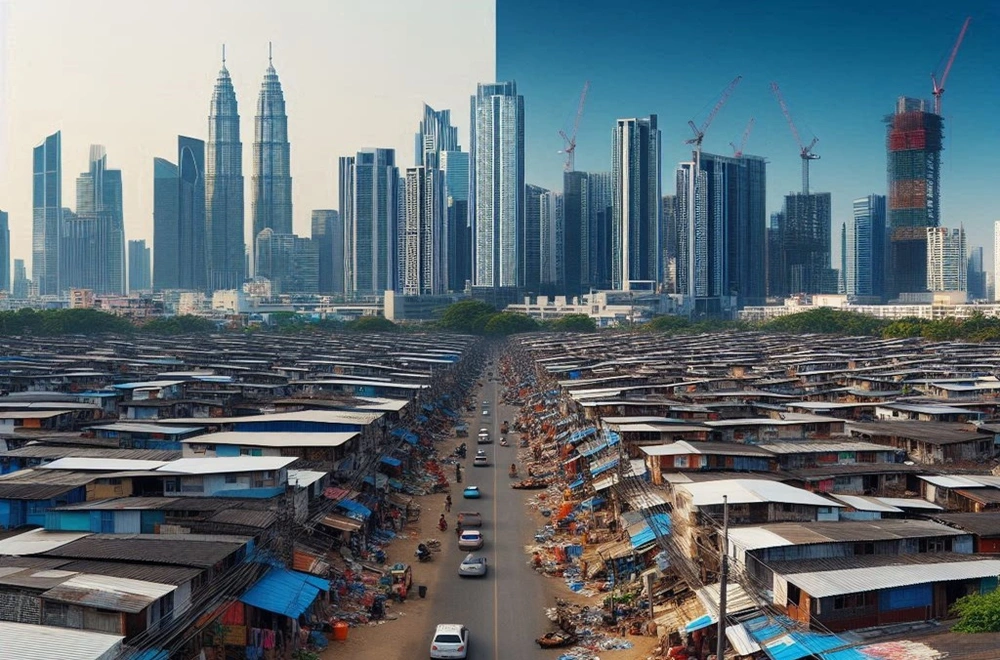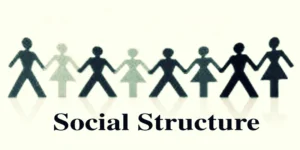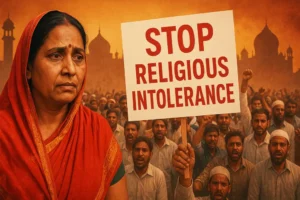Understanding the Sociology of Urban Poverty: Identifying Issues, Shaping Solutions
The sociology of urban poverty explores the social, economic, and political factors that contribute to poverty in cities.
Urban poverty is a persistent social phenomenon that affects millions of people across the globe. Unlike rural poverty—which is often visible in the form of underdeveloped infrastructure and agricultural dependency—urban poverty is multifaceted, involving both economic and social dimensions that coexist within cities known for their affluence and progress.
Let’s explore the causes of urban poverty and propose solutions through a sociological lens. Examine historical context, key sociological theories, demographic factors.

Introduction: The Sociology of Urban Poverty
Cities, as centers of economic activity and innovation, have long been seen as engines of growth. Yet, despite their role as hubs of wealth, cities continue to harbor significant pockets of poverty.
According to recent global data, nearly 800 million urban dwellers are at high risk due to limited access to basic services, and even in developed countries such as the United States, urban poverty rates persist with considerable racial and gender disparities.
The sociology of urban poverty examines the social, economic, and political factors contributing to poverty in cities. It explores issues like inequality, lack of access to resources, informal employment, and social exclusion. This field highlights how urbanization and systemic structures perpetuate poverty, aiming to address challenges through inclusive policies and sustainable development.
Understanding urban poverty through the lens of sociology helps illuminate the underlying structural inequalities, social policies, and institutional failures that create and sustain poverty amidst prosperity.
This article delves into the sociology of urban poverty, examines its causes, and discusses various policy and community-based solutions. In doing so, it reveals the complex interplay between economic forces, social dynamics, and political structures that shape the urban landscape.
Understanding Urban Poverty
Urban poverty refers to the challenges faced by individuals and families living in cities who lack access to basic necessities such as food, shelter, healthcare, and education. It is often characterized by overcrowded living conditions, inadequate infrastructure, and limited job opportunities.
Rapid urbanization exacerbates these issues, leading to the proliferation of slums and informal settlements. The urban poor frequently work in the informal sector, where jobs are insecure and wages are low. High living costs in cities further deepen their struggles, trapping them in cycles of poverty.
Addressing urban poverty requires a multidimensional approach, including affordable housing, improved access to essential services, and sustainable employment opportunities.
Tackling these challenges is crucial for fostering inclusive urban development and reducing inequality.
Historical Context of Urban Poverty
Historically, urban poverty emerged with rapid industrialization and urbanization. During the early twentieth century, cities were characterized by overcrowded slums and poor sanitation, as noted by early sociologists in studies of urban America.
With the advent of industrial growth, cities attracted migrants seeking employment opportunities, but they also created environments of stark wealth disparities and exploitation.
Early studies, such as those by the Chicago School of Sociology, explored how industrial capitalism fostered an environment in which poverty was simultaneously a by-product of urban growth and a mechanism for labor exploitation.
In modern times, while infrastructure and living conditions have generally improved, historical patterns persist. Several research reports shed light on detailed theoretical debates on the issue of urbanization and urban poverty.
Urban poverty today is linked not only to economic factors but also to social policies that fail to address the changing nature of work and residential segregation. For instance, post-1960s deindustrialization led to the spatial mismatch between where low-skill workers lived and where jobs were available—a phenomenon poignantly described by William Julius Wilson in The Truly Disadvantaged (1987).
Importance of Studying Urban Poverty in Sociology
The sociology of urban poverty helps us understand the social, economic, and political factors driving inequality in cities. It sheds light on systemic issues like housing shortages, informal employment, and social exclusion. This knowledge informs policies and interventions, promoting inclusive urban development and addressing the root causes of poverty effectively.
Studying urban poverty is crucial for several reasons:
- Diagnostic and Evaluative: Sociological research helps diagnose the root causes and social consequences of urban poverty and evaluate the effectiveness of current policies.
- Policy Formulation: Understanding the social and economic structure of urban poverty informs policies that promote inclusive growth and redistribution.
- Social Justice: It highlights systemic inequalities and social exclusion, fostering greater public empathy and political will for structural change.
- Urban Sustainability: Examining urban poverty contributes to planning for sustainable, resilient cities that can provide opportunities for all residents.
Key Sociological Theories Related to Urban Poverty
1. Structural Functionalism
Structural functionalists view urban poverty as a consequence of dysfunction within the social system. They argue that every element of society, including poverty, has a role in maintaining the social order—even if that role is to provide a buffer for economic transitions.
For example, poverty can serve as a labor reserve, ensuring a supply of low-wage workers for key industries. While this perspective has been critiqued for its apparent acceptance of poverty as a ‘functional necessity,’ it provides a basis for understanding the systemic nature of urban disparities.
2. Conflict Theory
Conflict theory, in contrast, sees urban poverty as rooted in power imbalances and economic exploitation. According to conflict theorists, urban poverty is the result of unequal resource allocation, class struggles, and institutionalized discrimination.
The concentration of poverty in inner-city neighborhoods is not accidental but is rather a product of deliberate policies, such as residential segregation, unequal education funding, and the spatial mismatch between job availability and poor neighborhoods.
William Julius Wilson’s work is particularly influential here, demonstrating how deindustrialization, racial segregation, and the withdrawal of public investment have left many inner-city residents marginalized.
3. Symbolic Interactionism
Symbolic interactionism focuses on the everyday interactions and meanings that individuals attach to their experiences of poverty. This perspective reveals how poverty is not merely an economic condition but also a social stigma that influences individuals’ identities and self-worth.
For instance, the internalization of a “culture of poverty”—a concept introduced by Oscar Lewis—has been debated in sociology. Critics argue that while certain behaviors may develop as coping mechanisms in impoverished contexts, these behaviors are often overstated in explaining poverty, shifting attention away from broader structural issues.
Demographic Factors Influencing Urban Poverty
Demographic characteristics play a significant role in shaping urban poverty. Several factors intersect to determine who is most vulnerable:
1. Race and Ethnicity
Numerous studies confirm that racial and ethnic minorities suffer disproportionately from urban poverty. In the United States, for example, poverty rates among Black and Hispanic communities are significantly higher than those among white populations.
A recent report by the UCL Institute of Health Equity highlighted that over half of Black children and nearly three-quarters of Bangladeshi and Pakistani children in London live in relative poverty—a clear indication of how structural racism and historical exclusion continue to impact marginalized communities.
2. Gender
Women, particularly single mothers, are often overrepresented among the urban poor. Gender disparities in income, employment opportunities, and access to social services exacerbate poverty rates for women.
Policies that fail to address gender inequalities—such as inadequate childcare facilities or discriminatory pay practices—further entrench poverty in urban settings.
3. Age
Children and the elderly are especially vulnerable in urban poverty dynamics. Longitudinal studies indicate that about two out of every five American children spend at least a year in poverty before turning 18, and persistent poverty during childhood is linked to lower educational attainment and limited future opportunities.
Elderly populations, due to fixed incomes and rising healthcare costs, often find themselves unable to escape poverty, despite residing in affluent urban areas.
Causes of Urban Poverty
Urban poverty is a multifaceted issue with economic, social, and political causes. These causes are interrelated and often compound each other, creating cycles of disadvantage that are difficult to break.
A. Economic Factors
1. Labor Market Dynamics
Deindustrialization and globalization have transformed urban economies, leaving many low-skilled workers unemployed or underemployed.
As industries relocate or modernize, traditional manufacturing jobs disappear, and the service sector often does not offer sufficient wages or stability for urban residents.
William Julius Wilson’s spatial mismatch theory argues that the geographical separation between where low-income workers reside and where jobs are available contributes to persistent urban poverty.
2. Income Inequality
Rising income inequality is a major economic driver of urban poverty. Even as cities generate substantial wealth, the distribution of this wealth is often uneven.
Studies show that in cities like New York and London, a small elite controls a disproportionate share of resources, while large segments of the population struggle to meet basic needs.
For instance, the Urban Institute reports that despite ongoing economic growth, disparities in income and access to quality jobs continue to fuel poverty in many urban centers.
3. Cost of Living
In many urban areas, the cost of living—including housing, transportation, and utilities—has escalated, often outpacing wage growth for the low and middle classes.
This phenomenon is particularly acute in global cities such as London, where impoverished populations face high rental costs and limited access to affordable housing.
Poverty thresholds adjusted for local costs have shown that even in relatively affluent cities, many residents live near or below the poverty line.
B. Social Factors
1. Residential Segregation
Residential segregation along racial and socioeconomic lines remains a critical factor in urban poverty. Historical practices such as redlining, discriminatory housing policies, and urban renewal projects have concentrated poverty in specific neighborhoods.
These neighborhoods frequently suffer from underinvestment in public infrastructure, leading to poor educational and employment opportunities for residents.
A comprehensive review by Douglas Massey and Nancy Denton in American Apartheid underscores how segregation perpetuates socioeconomic isolation and limits social mobility for minority communities.
2. Social Capital and Networks
Social networks and community institutions play a vital role in providing support and opportunities.
Urban areas characterized by low levels of social capital—where residents lack trust, community engagement, or robust networks—are more likely to experience higher levels of poverty.
In communities where isolation and disintegration prevail, residents are less able to access information about job opportunities or community resources, further deepening poverty.
3. Health and Education Disparities
Poverty is closely linked with disparities in health and education. Poor health undermines an individual’s ability to work, while inadequate education limits access to better-paying jobs.
For example, research indicates that children experiencing persistent poverty are 43% less likely to finish college compared to those who experience short-term poverty.
Urban environments with limited access to quality healthcare and educational facilities exacerbate these challenges, creating a cycle where poverty and poor outcomes reinforce one another.
Read Here: The Sociology of Health Disparities Among Minority Populations
C. Political Factors
1. Government Policies and Urban Planning
Government policies directly influence urban poverty. Policies that favor market-driven development without adequate safety nets have often led to gentrification and the displacement of low-income residents.
Urban renewal projects, while intended to revitalize cities, can disrupt established communities and force residents into more precarious living situations. Moreover, a lack of coordinated social welfare programs limits the state’s ability to support its most vulnerable citizens.
2. Institutional Racism and Discrimination
Institutional racism remains a significant barrier to economic and social advancement for minority groups in urban areas.
Discriminatory practices in employment, housing, education, and law enforcement contribute to systemic inequalities. For instance, a report by the UCL Institute of Health Equity highlights that structural racism in London leads to substantially higher poverty rates among Black and South Asian communities. These structural disparities are entrenched in both policy and practice, making urban poverty a reflection of broader inequalities in society.
3. Political Representation and Participation
The political invisibility of the urban poor further compounds the problem. Marginalized groups often lack effective political representation, and their interests are frequently sidelined in policy debates.
The absence of lobbying power and organized advocacy means that government policies may not adequately address the needs of those living in urban poverty. As a result, poverty reduction measures are frequently diluted or misdirected, failing to achieve meaningful change.
Solutions to Urban Poverty
Addressing urban poverty requires a multifaceted approach that combines community-based initiatives, policy reforms, and collaborative efforts between the public and private sectors.
A. Community-Based Initiatives
1. Local Empowerment and Social Capital Building
One of the key strategies in combating urban poverty is the empowerment of communities through local initiatives.
By strengthening social networks and supporting grassroots organizations, urban neighborhoods can build collective efficacy and resilience.
Community development programs that focus on education, vocational training, and local entrepreneurship can empower residents to create pathways out of poverty.
These initiatives help build the social capital needed to overcome isolation and enhance access to employment opportunities.
2. Public Health and Educational Programs
Improving access to quality healthcare and education can have a transformative impact on impoverished urban communities.
Studies show that interventions aimed at reducing health disparities and improving educational outcomes can break the cycle of poverty. For example, investments in early childhood education, affordable childcare, and community health clinics have led to improved long-term outcomes for children and adults alike.
Tailoring public health programs to address issues such as mental health, nutrition, and preventive care is essential for enabling urban residents to attain a better quality of life.
3. Local Housing and Infrastructure Projects
Community-led housing initiatives, including affordable housing cooperatives and neighborhood revitalization projects, can mitigate the adverse effects of gentrification and displacement.
Projects that refurbish existing affordable housing and improve neighborhood infrastructure—such as parks, transportation, and community centers—can foster a sense of belonging and stability.
These projects not only provide immediate relief but also contribute to long-term community development and sustainability.
B. Policy Recommendations
1. Inclusive Urban Planning
Governments must integrate poverty reduction into urban planning and development strategies. This includes revisiting zoning laws to promote mixed-income neighborhoods, strengthening affordable housing policies, and investing in public transportation that connects impoverished areas with job centers.
Inclusive urban planning should also prioritize green spaces and community facilities that promote well-being and resilience among urban residents.
2. Social Welfare and Labor Market Policies
Enhancing social welfare programs is vital to support those living in poverty. Policies such as a living wage, paid family leave, and affordable healthcare can provide a safety net for vulnerable groups.
Moreover, policies aimed at job creation—through public works, vocational training, and small business support—can help bridge the gap between low-wage employment and sustainable livelihoods.
A universal basic income (UBI) has also been proposed by some scholars as a potential measure to reduce poverty and provide financial stability in times of economic disruption.
3. Anti-Discrimination and Racial Equity Initiatives
Addressing the deep-rooted issues of institutional racism is critical to reducing urban poverty. Governments should implement and enforce robust anti-discrimination policies in employment, housing, and education.
Measures such as affirmative action, equal opportunity regulations, and targeted investments in minority communities are essential.
These initiatives not only help rectify historical injustices but also create a more level playing field that allows all citizens to access opportunities.
4. Fiscal and Tax Policies
Fiscal policies that redistribute wealth more equitably can also play a significant role in poverty reduction.
Progressive tax systems, where higher income earners contribute a larger share of their income, can generate revenue for social programs and public services.
Investments in education, healthcare, and infrastructure funded by such tax policies ensure that the benefits of economic growth are more broadly shared.
C. Collaboration Between Government, NGOs, and Communities
No single sector has all the answers to combat urban poverty. A collaborative approach involving governments, non-governmental organizations (NGOs), community-based organizations, and the private sector is crucial. For example, partnerships between the public sector and local NGOs have been effective in delivering targeted interventions in education and healthcare.
Collaborative efforts can also harness private investment for affordable housing projects and infrastructure improvements, ensuring that interventions are both sustainable and scalable.
Successful examples of public-private partnerships can be found in cities like New York and London, where integrated programs have improved access to education, healthcare, and employment among marginalized communities.
Cross-sector collaboration allows for a pooling of resources, knowledge, and expertise, which is essential for addressing the structural and systemic roots of urban poverty.
Final Thoughts on the Sociology of Urban Poverty
The sociology of urban poverty offers a rich and nuanced understanding of why poverty persists in the heart of prosperous cities.
The future of urban poverty is not predetermined. Despite the complex challenges it poses, urban poverty can be significantly reduced through comprehensive, multidimensional approaches.
The convergence of economic growth, inclusive urban planning, and robust social policies offers a promising pathway to alleviate poverty. However, achieving this requires a sustained commitment to addressing structural inequities, promoting social justice, and ensuring that the benefits of growth are shared equitably.
Sociological analyses remind us that urban poverty is rooted not only in economic factors but also in social relationships, demographic inequalities, and political structures. The interplay between these elements creates a web of disadvantage that can be difficult to unravel. Yet, through community-based interventions and collaborative policymaking, cities can evolve into inclusive spaces where all residents have the opportunity to thrive.
The challenges are immense. Rapid urbanization, persistent income inequality, and institutional discrimination continue to shape urban environments around the world. In cities such as London, New York, and Mumbai, the struggles of the urban poor are evident in overcrowded housing, inadequate public services, and high rates of unemployment and underemployment. These issues are not isolated but are interconnected—a public health crisis in impoverished neighborhoods further exacerbates educational and economic challenges.
Recent policy initiatives have shown promising results. The implementation of affordable housing programs, improvements in public transportation, and targeted health and education interventions have demonstrated that systematic investments in low-income urban communities yield substantial social and economic benefits. However, for these measures to have lasting impact, they must be integrated within a broader framework of social justice that recognizes and rectifies historical inequities.
As we look forward, the goal should be to create cities that not only generate wealth but also nurture human potential. Urban policymakers must innovate and adopt policies that are dynamic and responsive to the needs of the urban poor. This includes embracing technological innovations in data collection and poverty mapping to ensure that the invisible poor are brought into the light of public policy.
Recent advancements in machine learning and satellite imagery, for example, are being used to produce more accurate poverty maps that help policymakers direct resources more effectively.
Furthermore, urban poverty cannot be understood without recognizing its cultural dimensions. The stigmatization of the poor and the internalization of a “culture of poverty” can hinder the progress of individuals even in the presence of adequate opportunities.
Addressing these social perceptions through community engagement, empowerment programs, and educational initiatives is crucial for changing not only material conditions but also social attitudes.
The journey towards reducing urban poverty is a collective one. It requires courage, political will, and the recognition that poverty is a challenge we must confront together. Interventions must be holistic—combining the strengths of community-based initiatives with the power of governmental and institutional resources.
The future of urban poverty, then, is not a foregone conclusion. With visionary leadership, committed communities, and informed policies, we can build urban environments that are not only economically vibrant but also socially inclusive—a future where every city resident, regardless of their background or circumstances, has the means to live a dignified and fulfilling life.
Author: Mahtab Alam Quddusi – A postgraduate in Sociology





